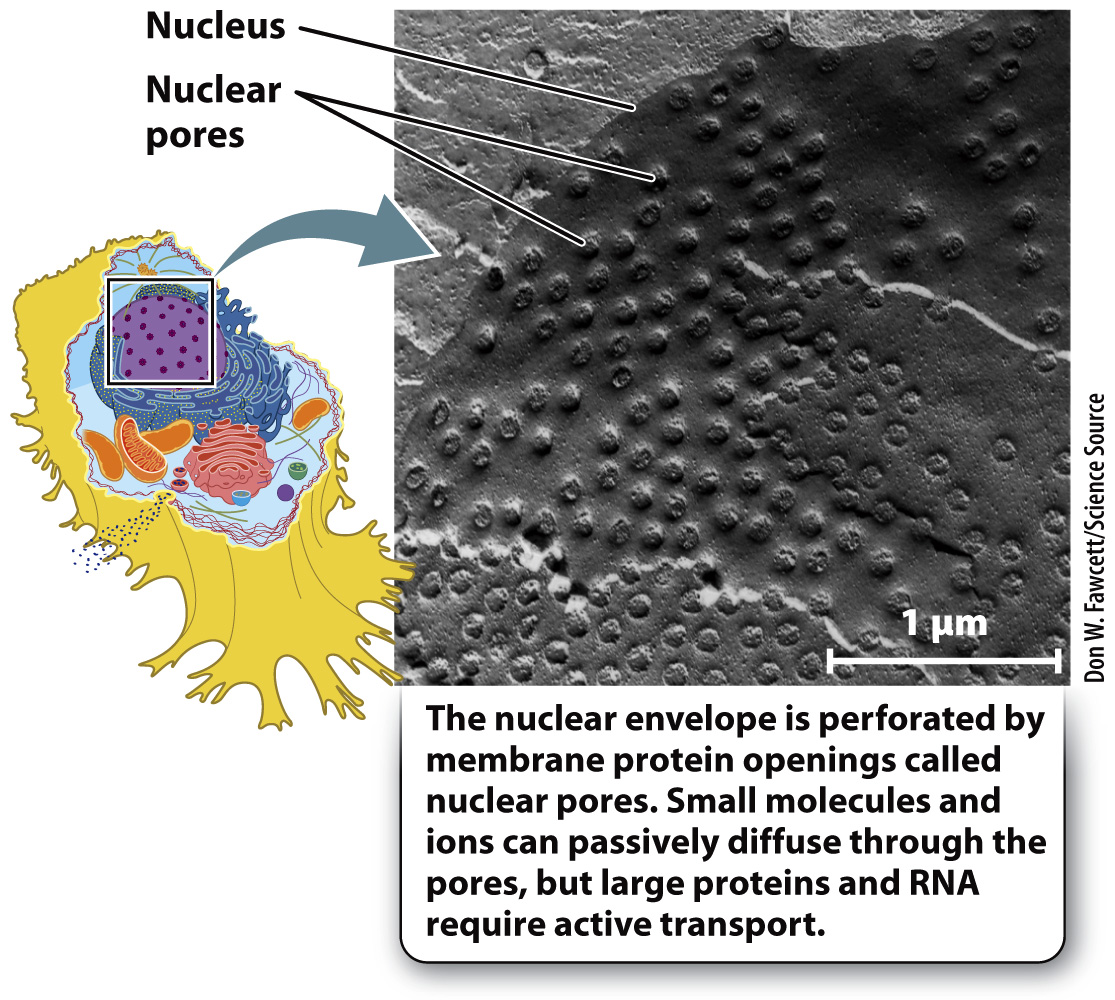The nucleus houses the genome and is the site of RNA synthesis.
The innermost organelle of the endomembrane system is the nucleus, which stores DNA, the genetic material that encodes the information for all the activities and structures of the cell. The nuclear envelope defines the boundary of the nucleus (Fig. 5.19). It actually consists of two membranes, the inner and outer membranes, and each is a lipid bilayer with associated proteins.

These two membranes are continuous with each other at openings called nuclear pores. These pores are large protein complexes that allow molecules to move into and out of the nucleus, and thus are essential for the nucleus to communicate with the rest of the cell. For example, some proteins that are synthesized in the cytosol, such as transcription factors, move through nuclear pores to enter the nucleus, where they control how and when genetic information is expressed.
In addition, the transfer of information encoded by DNA depends on the movement of mRNA (messenger RNA) molecules out of the nucleus through these pores. After exiting the nucleus, mRNA binds to free ribosomes in the cytosol or ribosomes associated with the endoplasmic reticulum (ER). Ribosomes are the sites of protein synthesis, in which amino acids are assembled into polypeptides guided by the information stored in mRNA (Chapter 4). In this way, the nuclear envelope and its associated protein pores regulate which molecules move into and out of the nucleus.